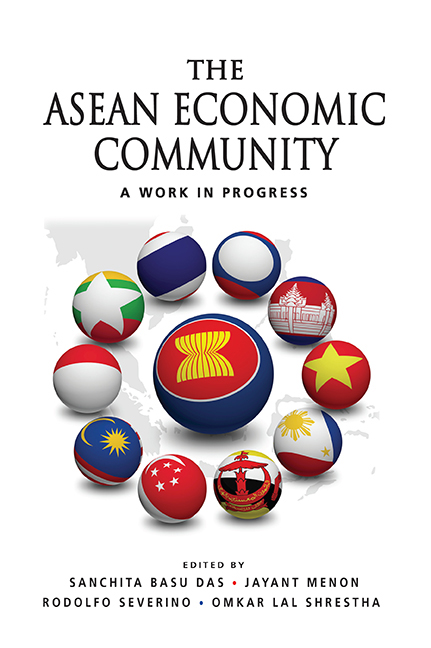Book contents
- Frontmatter
- Contents
- Foreword
- Foreword
- Preface
- acknowledgments
- Abbreviations
- The Contributors
- 1 Overview
- 2 Non-Tariff Barriers: A Challenge to Achieving the ASEAN Economic Community
- 3 ASEAN Trade in Services
- 4 The Asean Economic Community: The Investment Climate
- 5 Competition and Intellectual Property Laws in the ASEAN ‘Single Market’
- 6 Subregional Zones and ASEAN Economic Community
- 7 ASEAN FTAs: State of Play and Outlook for Asean's Regional and Global Integration
- 8 The Asean Dispute Settlement System
- 9 Enhancing the Institutional Framework for AEC Implementation: Designing Institutions that are Effective and Politically Feasible
- 10 ASEAN Economic Community Business Survey
- Index
8 - The Asean Dispute Settlement System
Published online by Cambridge University Press: 21 October 2015
- Frontmatter
- Contents
- Foreword
- Foreword
- Preface
- acknowledgments
- Abbreviations
- The Contributors
- 1 Overview
- 2 Non-Tariff Barriers: A Challenge to Achieving the ASEAN Economic Community
- 3 ASEAN Trade in Services
- 4 The Asean Economic Community: The Investment Climate
- 5 Competition and Intellectual Property Laws in the ASEAN ‘Single Market’
- 6 Subregional Zones and ASEAN Economic Community
- 7 ASEAN FTAs: State of Play and Outlook for Asean's Regional and Global Integration
- 8 The Asean Dispute Settlement System
- 9 Enhancing the Institutional Framework for AEC Implementation: Designing Institutions that are Effective and Politically Feasible
- 10 ASEAN Economic Community Business Survey
- Index
Summary
Introduction
Since its inception in 1967, ASEAN has been an important regional association. It is active in promoting trade liberalization and political stability. ASEAN members have, through the years, signed several treaties to promote trade and investment activities in the region.
Of the numerous ASEAN legal milestones, the most significant and recent one is the ASEAN Charter. Its signing in 2007 coincided with ASEAN's 40th year of existence. The Charter adds to the legal infrastructure of the organization, including elements relating to dispute settlement. It is, however, by no means the only significant treaty of ASEAN, as a number of other agreements had already set up important legal commitments in the areas of trade and investment liberalization and integration.
ASEAN dispute settlement mechanisms deal with a variety of issues. By way of overview, this chapter begins by introducing major aspects of the dispute settlement system of ASEAN, pre-Charter and in light of the Charter. The chapter discusses briefly the over-arching dispute settlement mechanisms under the ASEAN Charter, after which it focuses on ASEAN's dispute settlement mechanisms for resolving investment and trade disputes. For the former type of dispute, the mechanisms are contained in more than one investment treaty, and these will be discussed. For the latter type of disputes, the key document which will be discussed is the Protocol on Enhanced Dispute Settlement Mechanism (“DSM”). Investment and trade dispute settlement mechanisms forms the main focus of this chapter, as they are key mechanisms supporting the ASEAN economic integration objective, and are therefore the most relevant to the efforts to accelerate the realization of the ASEAN Economic Community (AEC). Finally, the chapter makes a number of recommendations to improve these mechanisms and their support systems and to pave the way for their use if necessary in enforcing the various trade and investment liberalization commitments of ASEAN members in building the AEC.
Treaty of Amity and Cooperation
This milestone treaty was signed in February 1976 and is one of the earliest ASEAN documents with a dispute settlement mechanism. The Treaty was established with the following purpose:
to promote perpetual peace, everlasting amity and cooperation among their peoples which would contribute to their strength, solidarity and closer relationship …
One of its cornerstone principles is the settlement of differences or disputes by peaceful means. Articles 13 to 17 elaborate on how this principle is to be achieved.
- Type
- Chapter
- Information
- The ASEAN Economic CommunityA Work in Progress, pp. 382 - 410Publisher: ISEAS–Yusof Ishak InstitutePrint publication year: 2013



